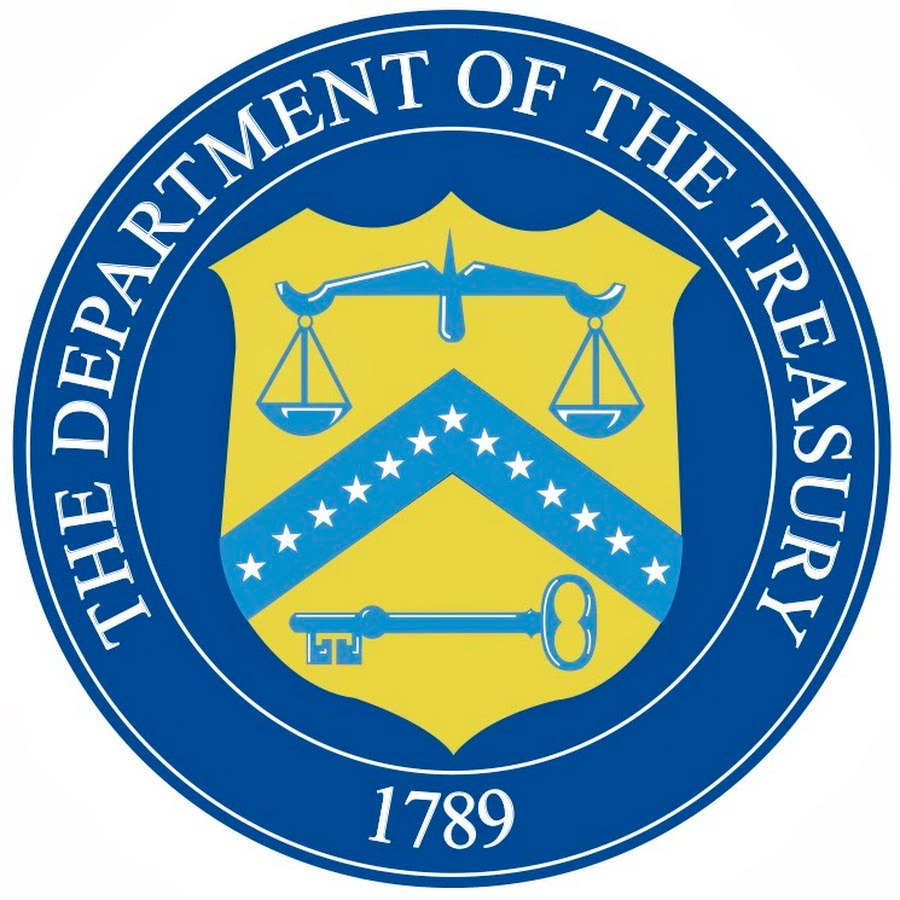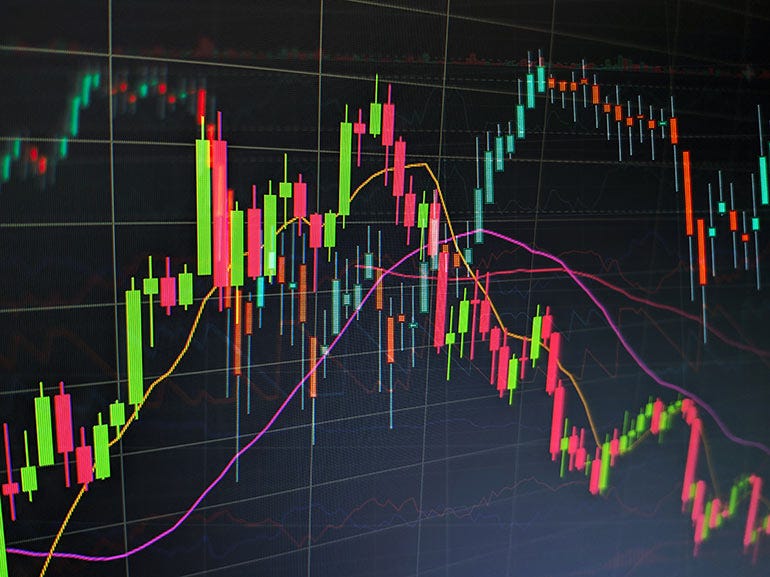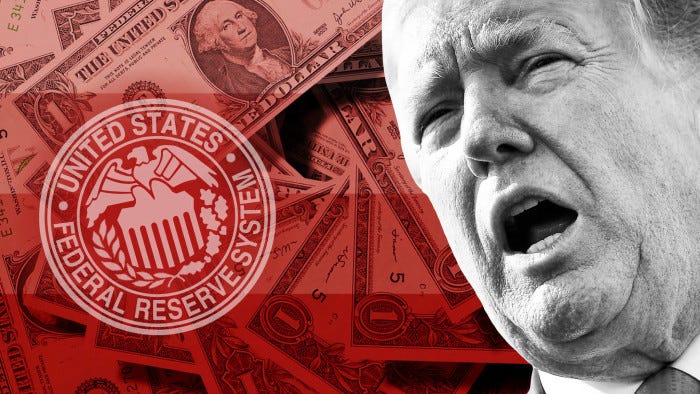Beyond the Fed: What the Treasury's QE-Like Move Means for Markets and the Dollar
Underlying Risks in the Treasury Market: Lessons from Financial History
Introduction: The Growing Role of the Treasury in Economic Policy
In a recent video by George Gammon on the Rebel Capitalist platform, he delves deep into the announcement of a new round of quantitative easing (QE) by the U.S. government, but this time without the participation of the Federal Reserve. This development has raised many questions about the future of monetary policy, the stability of the financial markets, and the strategic positioning of the U.S. dollar. Gammon’s discussion touches on various critical points, offering a mixture of analysis, economic theory, and real-world implications. In this article, we will break down the key themes from the video and explore the broader context behind the government's move toward a QE-like policy.
Unconventional Quantitative Easing: The Treasury Takes the Lead
George Gammon initiates the discussion by highlighting the novelty of the situation, stating, “We're seeing the government announcing a new round of QE, but what's interesting here is that it’s the government, not the Fed.” This observation immediately underscores a significant departure from traditional monetary policy frameworks where central banks, like the Federal Reserve, typically conduct QE to inject liquidity by purchasing government debt. The fact that the Treasury is now directly engaging in what resembles QE suggests a potential recalibration of the roles and responsibilities within U.S. economic management.
Gammon further elaborates on this deviation, pointing out the implications of the Treasury's direct intervention, as it "signals a shift in the traditional roles of fiscal and monetary policy." Traditionally, fiscal policy, managed by the Treasury, involves government spending and taxation, while monetary policy, overseen by the Fed, focuses on interest rates and money supply. The Treasury's move blurs these lines, indicating a more integrated approach where the executive branch is directly influencing market liquidity, a function typically reserved for the independent central bank. This could lead to debates about the potential for political influence on monetary conditions.
Market Volatility Amidst Policy Shifts: Stocks and Bonds in Flux
Addressing the immediate market reactions, Gammon notes the sensitivity of equities, observing, “The stock market is very volatile to the downside... but let's see what’s happening more recently.” This highlights the inherent uncertainty and potential for sharp declines in stock prices as market participants digest new economic policies and their potential consequences. The initial negative reaction suggests investor apprehension regarding the implications of the Treasury's unconventional QE approach.
However, Gammon also cautions against drawing definitive conclusions from short-term market movements, stating that “market participants are quick to react to headlines, but the situation can change rapidly, often undermining the predictions made based on short-term data.” This emphasizes the dynamic and often unpredictable nature of financial markets, where initial reactions can be swiftly reversed as more information becomes available or as market sentiment shifts. Regarding fixed income, he points out that “yields are blowing out,” indicating a rapid increase in Treasury bond yields, but immediately counters this by saying that “yields can shift in the opposite direction just as quickly.” This volatility in bond yields reflects the market's struggle to price debt accurately in the face of this novel policy, creating uncertainty for borrowing costs and investment strategies.
Alex Jones, Tucker Carlson, and the Free Speech Debate: An Analysis of Censorship and Globalism
Framing the Discourse on Censorship and Free Speech
"The US government has spent the last 12 years trying to censor and destroy me... and it’s not because I’m crazy and dishonest, it’s because I’m telling the truth."
The Resilient Dollar: Challenging the De-Dollarization Narrative
Countering prevalent narratives about the dollar's decline, Gammon presents a contrasting data point, stating, “Look at the DXY today, up over 100.” This directly challenges the idea of a rapidly weakening dollar and suggests that, at least in the short term, the U.S. currency maintains significant strength relative to other major currencies. This resilience could be attributed to various factors, including its continued role in global trade and finance, as well as demand for U.S. assets.
Reflecting on his previous analysis, Gammon remarks, “I got the concept right,” referring to his forecast of the dollar snapping back after a period of decline. He further specifies the dollar's movement, noting that “while the dollar temporarily dropped to 99.5, it has since strengthened.” This highlights the importance of considering longer-term trends and the potential for temporary dips to be followed by recoveries. The dollar's ability to rebound despite the unconventional QE measures suggests underlying strength and continued global reliance on the currency.
Treasury Market Fragility: Echoes of Past Financial Crises
Drawing attention to official concerns, Gammon references a statement, alluding to a Treasury official, "Scott Bent, a Treasury official, who discussed the risks of excessive leverage and the potential for a ‘break the glass’ moment in the markets." This highlights the inherent risks within the financial system, particularly concerning the build-up of leverage that could trigger sudden and severe market disruptions. Such warnings from within the Treasury underscore the potential for instability that policymakers are actively monitoring.
In response to these concerns, Gammon draws a parallel to past financial turmoil, asking, “I think he's not wanting to get into too much detail there... what was the LTCM blowup really about?” By referencing the collapse of Long-Term Capital Management (LTCM) in 1998, Gammon implicitly warns about the dangers of interconnectedness and excessive leverage in the financial system. He further illustrates this vulnerability with an analogy, explaining that “the global economic system [is] like a series of interconnected Christmas lights, explaining that a failure in one part of the system could lead to a broader collapse.” This vivid analogy underscores the systemic risks where the failure of one entity or market segment can have cascading effects throughout the entire global financial network.
Divergent Views on Economic Policy: Intervention vs. Free Markets
Analyzing the perspectives within the policy-making sphere, Gammon offers his assessment of key figures, stating about one official, “Scott Bent... is a ‘good sharp guy’ who is ‘head and shoulders better than the rest’ of the administration’s economic advisors.” This indicates a recognition of nuanced and potentially sound economic thinking within the government, even amidst broader policy disagreements. Such an observation suggests that not all approaches within the administration are monolithic.
Contrasting this view, Gammon expresses his disapproval of other advisors, reflecting, “He contrasts this with his criticism of other figures in Trump’s circle, such as Peter Navarro, whose economic policies Gammon describes as ineffective and misguided.” This highlights the internal debates and conflicting ideologies that can influence economic policy decisions. Furthermore, Gammon reveals his preference for a more laissez-faire approach, stating, “I just wish Trump would be more like Malay,” referring to Argentine economist Javier Milei, whose views on economic policy resonate more with Gammon's free-market ideals. This comparison underscores the fundamental differences in economic philosophies that shape policy discussions and ultimately impact the direction of government intervention.
Conclusion: Navigating a New Era of Economic Intervention
The U.S. government's move towards a QE-like policy, bypassing the traditional role of the Federal Reserve, signifies a potential paradigm shift in how economic policy is formulated and implemented. As the Treasury takes a more direct hand in managing market liquidity, the financial landscape is likely to experience continued volatility, reflecting the market's adaptation to this unconventional approach. The surprising resilience of the U.S. dollar amidst these changes and the underlying fragility of the Treasury market, as highlighted by official concerns and historical parallels, will remain critical factors to monitor. Ultimately, the long-term consequences of this increased government intervention will determine the future stability and growth of the U.S. and global economies. By closely analyzing these developments, stakeholders in business and finance can better understand the evolving dynamics and potential risks and opportunities that lie ahead.











